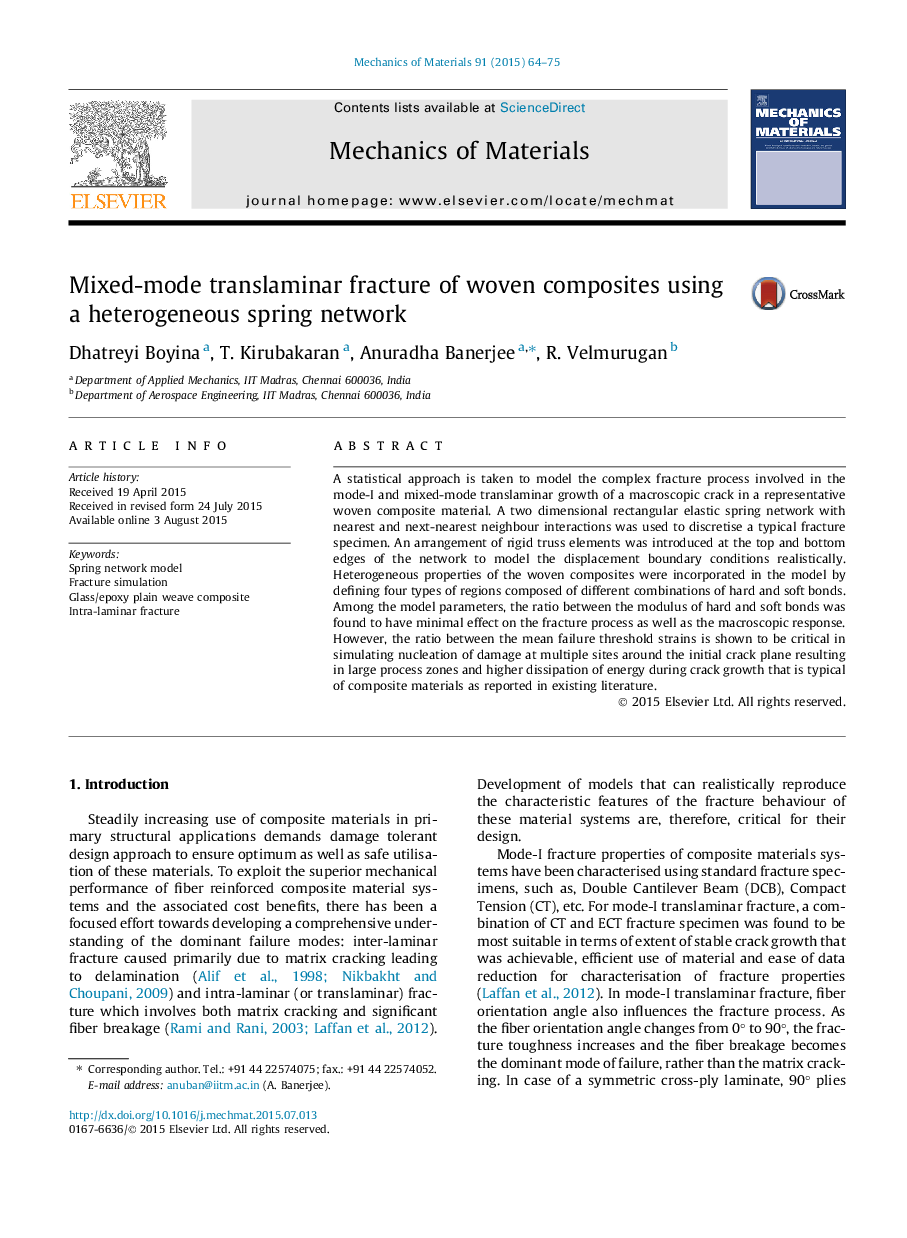| کد مقاله | کد نشریه | سال انتشار | مقاله انگلیسی | نسخه تمام متن |
|---|---|---|---|---|
| 802683 | 1467449 | 2015 | 12 صفحه PDF | دانلود رایگان |
• Statistical approach to model translaminar fracture of woven composite material.
• 2D spring network with rigid trusses at the edges used to model boundary conditions.
• Heterogeneity in threshold strain was critical in predictions for mixed-mode.
A statistical approach is taken to model the complex fracture process involved in the mode-I and mixed-mode translaminar growth of a macroscopic crack in a representative woven composite material. A two dimensional rectangular elastic spring network with nearest and next-nearest neighbour interactions was used to discretise a typical fracture specimen. An arrangement of rigid truss elements was introduced at the top and bottom edges of the network to model the displacement boundary conditions realistically. Heterogeneous properties of the woven composites were incorporated in the model by defining four types of regions composed of different combinations of hard and soft bonds. Among the model parameters, the ratio between the modulus of hard and soft bonds was found to have minimal effect on the fracture process as well as the macroscopic response. However, the ratio between the mean failure threshold strains is shown to be critical in simulating nucleation of damage at multiple sites around the initial crack plane resulting in large process zones and higher dissipation of energy during crack growth that is typical of composite materials as reported in existing literature.
Journal: Mechanics of Materials - Volume 91, Part 1, December 2015, Pages 64–75
